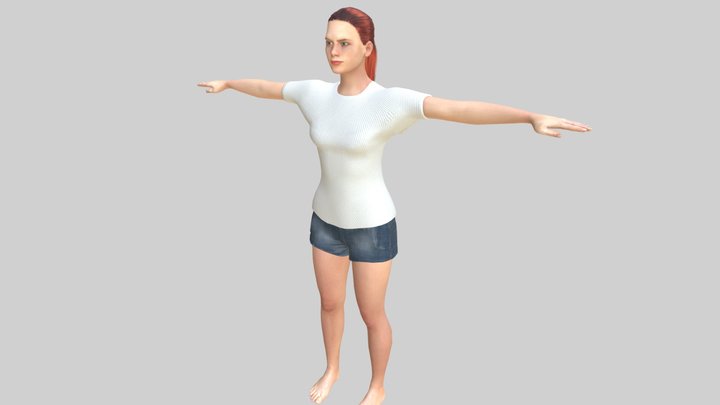

Speech recognition is required for any application that follows voice commands or answers spoken questions.

#MAKEHUMAN MODELS SOFTWARE#
Human language is filled with ambiguities that make it incredibly difficult to write software that accurately determines the intended meaning of text or voice data. But NLP also plays a growing role in enterprise solutions that help streamline business operations, increase employee productivity, and simplify mission-critical business processes. There’s a good chance you’ve interacted with NLP in the form of voice-operated GPS systems, digital assistants, speech-to-text dictation software, customer service chatbots, and other consumer conveniences. NLP drives computer programs that translate text from one language to another, respond to spoken commands, and summarize large volumes of text rapidly-even in real time.
#MAKEHUMAN MODELS FULL#
Together, these technologies enable computers to process human language in the form of text or voice data and to ‘understand’ its full meaning, complete with the speaker or writer’s intent and sentiment. NLP combines computational linguistics-rule-based modeling of human language-with statistical, machine learning, and deep learning models. The study aspires to assess the practicability of using the software in a Human Factors framework.Natural language processing (NLP) refers to the branch of computer science-and more specifically, the branch of artificial intelligence or AI-concerned with giving computers the ability to understand text and spoken words in much the same way human beings can. With one morphing target file for each parameters’ extreme values, multifactorial input change is amalgamated into a character, using an inference engine that produces a diversity of human bodies.

Fuzzy logic rules are employed in order to process inputs, which are linked directly to membership functions of fuzzy sets. The template model is divided into ‘areas of influence’, and form factors are calculated to detect contraction or expansion, improving the use of targets in these areas. A template model is transformed by means of scaling factors, resizing its segments and proportions, to create a set of human bodies compatible with the original base mesh. MakeHuman is a design (gaming) oriented, parametric virtual human modelling tool based on templates. In recent research work, MakeHuman was employed mostly to generate sets of virtual subjects. MakeHuman Blender tools connect the MakeHuman and Blender programs, allowing users to modify a base mesh shape, create clothes, apply static poses or generate animations. Height and age however are on an interval scale.

These input parameters govern associated output values, which mostly remain normalized. An intuitive graphical user interface working with sliders controls input parameters on normalized scales for the main parameters gender, age, muscle mass, weight, height, proportion and ethnicity. Developed on open source Python code, the program creates realistic appearance 3D virtual human models, primarily focusing on morphing details. MakeHuman is an open source software rarely used in Ergonomic studies.


 0 kommentar(er)
0 kommentar(er)
